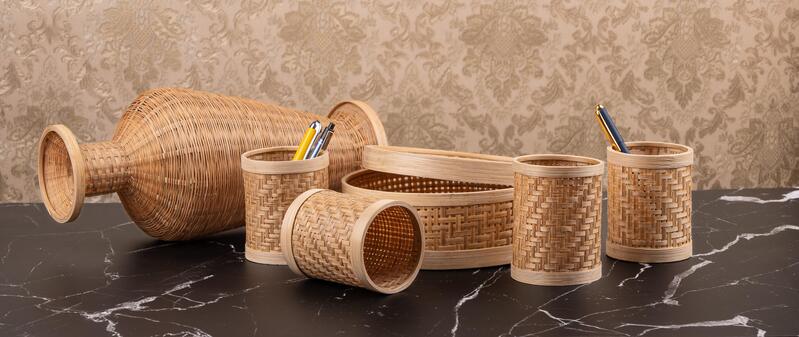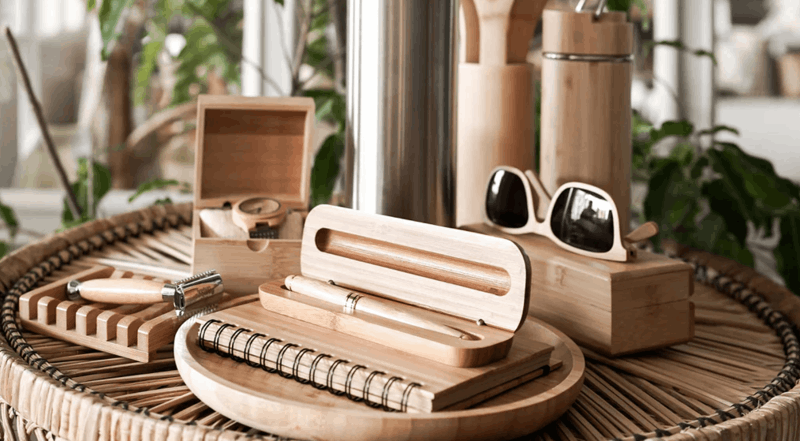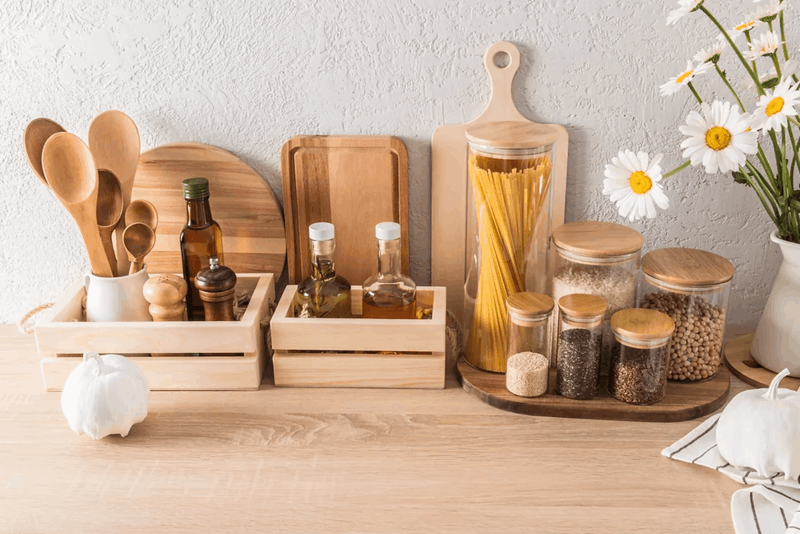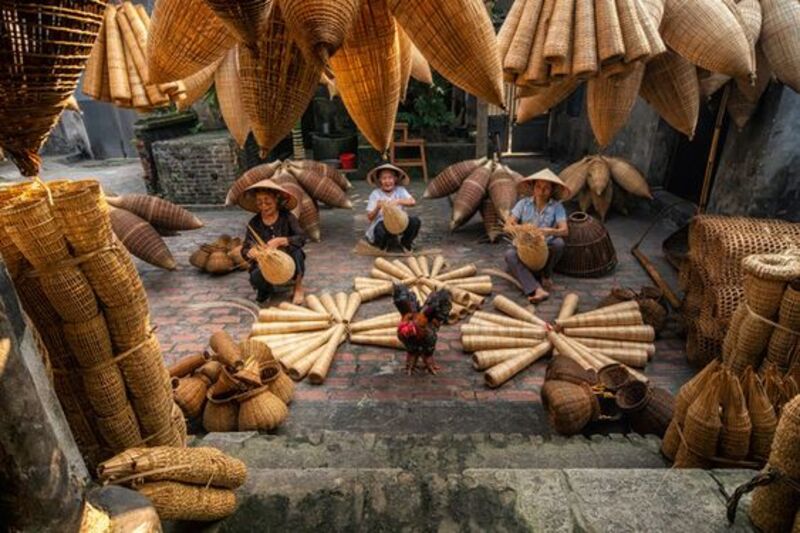No products in the cart.
Blog
How To Make Bamboo Handicrafts Essential Techniques
How to make bamboo handicrafts is a question that opens the door to a world of creative and sustainable crafting possibilities. Bamboo, a rapidly renewable resource, offers crafters the flexibility to create everything from sophisticated home decor to useful everyday items.
In this blog, we’ll explore the fundamental techniques for working with bamboo, helping you transform this sturdy yet lightweight material into stunning crafts that reflect your personal style.
The Versatility of Bamboo in Crafting

Because of its resilience, sustainability, and versatility, bamboo is highly recognized in the crafts community. This organic substance has numerous applications, ranging from complex ornamental pieces to building components.
Because of its quick growth rate and ability to be harvested often without causing substantial environmental damage, it is an environmentally benign alternative to wood.
Bamboo’s natural strength and flexibility allow it to be transformed into a wide range of products, including furniture, musical instruments, and even textiles. Moreover, the unique aesthetic of bamboo, with its smooth surface and natural grain patterns, adds a touch of elegance and simplicity to any craft project.
Why Choose Bamboo for Crafts?
Choosing bamboo for crafting projects offers numerous advantages due to its unique properties and benefits. Here’s a detailed list explaining why bamboo is a popular choice for crafts:
- Environmental sustainability: Bamboo grows rapidly, regenerates naturally, and doesn’t require pesticides, making it an eco-friendly resource.
- Durability and strength: Bamboo matches the strength of many woods and some metals, ensuring crafts are robust and durable.
- Lightweight nature: Its light weight makes bamboo easy to work with in various craft applications.
- Natural antibacterial properties: Bamboo naturally resists bacteria and fungi, ideal for hygienic products like kitchenware.
- Versatility in applications: Bamboo’s flexibility allows for a broad range of uses, from furniture to textiles.
- Aesthetic quality: With its smooth texture and pleasing grain, bamboo offers natural beauty that enhances any craft project.
- Carbon sequestration: Using bamboo helps in reducing carbon footprints due to its high carbon dioxide absorption rate.
- Economic viability: Bamboo is cost-effective to grow and process, making it financially appealing for craftspeople.
- Cultural significance: Bamboo has deep cultural importance in many regions, adding intrinsic value to crafted items.
These factors collectively make bamboo an appealing material for a wide range of crafts, combining practicality with beauty and sustainability.
Types of Bamboo Crafts
Bamboo can be used to create a diverse array of crafts, appealing to both traditional artisans and modern designers.
Common types of bamboo crafts include:
- Furniture: Chairs, tables, shelving units, and bed frames made of bamboo are not only sturdy and lightweight but also have a distinct, contemporary look.
- Decorative items: Bamboo can be crafted into vases, picture frames, lamps, and wall hangings, often featuring intricate carvings or combined with other materials like metal or glass.
- Functional items: Kitchen utensils, cutting boards, and containers utilize bamboo’s durability and natural resistance to bacteria.
- Textiles: Bamboo fibers are processed to create soft, breathable fabrics that are used in clothing, towels, and bedding.
- Musical instruments: Bamboo is traditionally used in many cultures to make wind instruments, such as flutes and panpipes, due to its hollow structure and natural resonance.
These crafts not only showcase bamboo’s functional properties but also its potential to be transformed into beautiful, useful items that blend tradition with modernity.
Popular Bamboo Craft Ideas

Bamboo’s versatility and aesthetic appeal make it a popular choice for various craft projects. Some popular bamboo craft ideas include making bamboo baskets, wind chimes, picture frames, and decorative sculptures. These crafts can range from simple DIY projects for beginners to more complex pieces that require skilled craftsmanship.
Bamboo also can be used in making eco-friendly jewelry, such as bracelets and necklaces, or as part of mixed-media art installations, showcasing its flexibility and sustainability.
Bamboo Home Decor
Bamboo home decor is widely appreciated for its natural, minimalistic aesthetic that complements both modern and traditional interiors. Items such as bamboo wall art, room dividers, and curtains add texture and warmth to any space. Additionally, bamboo is utilized to create mirrors, lampshades, and vases that can further accentuate a home’s eco-friendly design.
Its natural color and form fit well into an array of decorating styles, from rustic to contemporary, making it a versatile choice for interior designers and homeowners alike.
Bamboo Furniture
Bamboo furniture is celebrated for its strength, durability, and lightweight nature. Common bamboo furniture pieces include chairs, tables, bed frames, and shelving units. Due to its resistance to pests and the elements, bamboo is an excellent material for outdoor furniture as well.
The style of bamboo furniture can vary greatly, from sleek, modern designs to more traditional, intricately carved pieces. This allows it to seamlessly integrate into various decor themes, from Asian-inspired to Scandinavian minimalism.
Bamboo Kitchen Accessories
In the kitchen, bamboo is favored for its natural antibacterial properties and durability. Popular bamboo kitchen accessories include cutting boards, utensil sets (like spoons and spatulas), and serving trays. Bamboo is also used for more specialty items like sushi mats and steamer baskets.
These accessories are not only functional but also add a stylish, organic touch to the kitchen. Bamboo’s natural resistance to water and stains makes it particularly suitable for kitchen use, where cleanliness and longevity are important.
How to Make Bamboo Handicrafts?

Making bamboo handicrafts can be a rewarding DIY project. Here’s a general guide to get you started on crafting with bamboo:
Step 1: Gather Materials and Tools
- Bamboo: Choose the right type and size of bamboo for your project. Ensure it is clean and dry.
- Tools: Depending on your project, you may need a saw for cutting, a drill for making holes, sandpaper for smoothing, and a knife for splitting or carving.
- Adhesives: Wood glue or epoxy is useful for joining pieces.
- Finishes: Varnish, oil, or sealant to protect the bamboo and enhance its appearance.
Step 2: Preparing the Bamboo
- Cleaning: Clean the bamboo with a damp cloth to remove any dirt or debris.
- Cutting: Measure and mark where you need to cut. Use a fine-tooth saw to make clean cuts.
- Splitting: For projects requiring thinner pieces, split the bamboo using a sharp knife. Be sure to do this carefully to avoid splintering.
- Sanding: Sand the edges and surface of the bamboo to remove any splinters and create a smooth finish.
Step 3: Shaping and Assembling
- Shaping: You can shape bamboo by heating it gently with a heat gun and bending it as needed. This process, known as heat bending, allows bamboo to be molded into various shapes.
- Drilling: If your project requires assembly, drill holes for screws or for tying pieces together with rope or twine.
- Assembling: Use wood glue, screws, or traditional joinery methods like pegs to assemble your project. Clamps can be used to hold pieces together while the glue dries.
Step 4: Finishing Touches
- Finishing: Apply a finish such as bamboo oil, wood varnish, or a water-based sealant to protect the bamboo and enhance its natural color and grain.
- Decorating: Consider adding embellishments such as painting designs, using stains for color, or incorporating other materials like fabric or metal for added style.
Step 5: Maintenance
- Protect from the Elements: If your bamboo handicraft is for outdoor use, make sure the finish is suitable for exterior conditions to protect it from weathering.
- Regular Cleaning: Clean bamboo items regularly with a soft, damp cloth and mild soap to maintain their appearance.
Creating bamboo handicrafts can range from simple projects like making a picture frame or a vase to more complex ones like furniture making. Start with a basic project to get a feel for the material and gradually move on to more detailed crafts as you become more comfortable working with bamboo.
Conclusion
How to make bamboo handicrafts is a delightful journey into sustainable crafting. As we’ve seen, bamboo is incredibly versatile, allowing you to create everything from elegant home decor to useful items. With just a few tools and some creativity, you can start crafting with bamboo today. Embrace this eco-friendly material and bring a unique, natural charm to your surroundings.
Hello, I am Althea Stone, a devoted enthusiast of handicrafts, finds solace and creativity in the intricate artistry of handmade goods. My passion for crafting extends beyond mere hobby, serving as a gateway to self-expression and a means to infuse everyday life with beauty and ingenuity.

